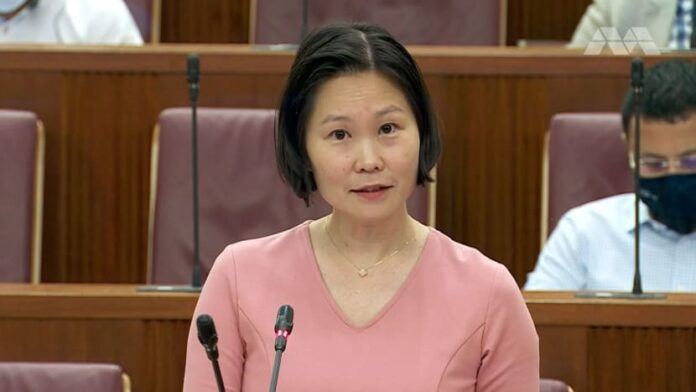SINGAPORE: Singapore’s resident female employment rate has risen from 54% in 2010 to 57.7% in 2020 over the past decade, compared with OECD countries, Minister of State for Manpower Gan Siow Huang said on Wednesday (Jan 12). Ranked high.
She was answering a parliamentary question from Ms Cheryl Chan (PAP-East Coast) and Ms Tin Pei Ling (PAP-McPherson) on trends in women’s employment.
Ms Tan asked the Ministry of Manpower (MOM) for its observations on emerging trends of female professionals joining emerging industries such as digitalisation and sustainability. Ms Tian asked which growth areas are currently lacking female talent and leaders the most, and what factors might be contributing to this gender imbalance.
Ms Gan said the share of women among professionals, managers, executives and technicians (PMETs) has increased from 41.1 per cent to 45.6 per cent over the past decade.
“We are seeing more women joining growth fields such as information and communications, financial services, health and social services,” she said. “Across the three industries, women make up a combined 52.8 per cent.”
The share of women in science, technology, engineering and math (STEM) jobs, albeit low, has increased from 29.9% in 2015 to 32.4% in 2020.
Ms Gan said a 2019 study of the adjusted gender pay gap in Singapore found that differences in gender ratios across occupations could be due to differences in personality and psychological traits, skills, different values on workplace flexibility and social norms. caused by gender differences.
“We will continue to work with our tripartite partners and community stakeholders to support women’s participation in the workforce and help them enter and remain in careers of their choice, including emerging industries.”
Ms Gan also answered Ms Yeo Wan Ling (People’s Action Party – Pasir-Ris Punggol) and Ms Joan Pereira (People’s Action Party – Tanjong Pagar) about preventing women from taking regular jobs and caring for caregivers’ careers, finances and retirement adequacy.
She listed the various ways the government supports carers and families with care needs, such as through subsidized care services and grants.
“These include directly supporting their care needs, enabling active caregivers to better manage work and their care responsibilities through flexible work arrangements, helping them re-enter the workforce through employment facilitation and training support, and enhancing their retirement adequacy rate,” she said.
Responding to Ms Yang’s question on the controversy over flexible working arrangements, Ms Gan said the government and tripartite partners were stepping up efforts to encourage widespread adoption of the arrangement.
The Tripartite Alliance for Fair and Progressive Employment Practices has not received any cases related to such disputes in 2021, she said.
Ms Gan said there was a small percentage of women who were unable to participate or fully participate in the labour market due to caring responsibilities.
In 2020, 15% of women cited family-related responsibilities as their main reason for leaving the workforce, while 6% took part-time jobs because of family or personal commitments.
“Securing and maintaining employment is key to financial resilience and retirement adequacy,” Ms Gan said.
“With increasing labour force participation and higher wages, today’s peers have been able to accumulate more CPF savings for retirement than they were a decade ago.”
The government has also introduced and stepped up measures in recent years to help Singaporeans, including carers, accumulate enough savings for retirement, she added.
The Silver Support Scheme provides quarterly payouts of up to S$900 for carers who are earning low incomes while working and are now retiring.
“About two-thirds of silver support recipients are women, including many carers,” she said.
She gave examples of other help, such as encouraging carers and their loved ones to top up their CPF with cash, and for older carers, they could take advantage of housing monetization schemes such as the lease buyback scheme and the Silver Home Bonus.
“The government will continue to review our multi-pronged efforts to ensure carers are well supported,” Ms Gan said.






